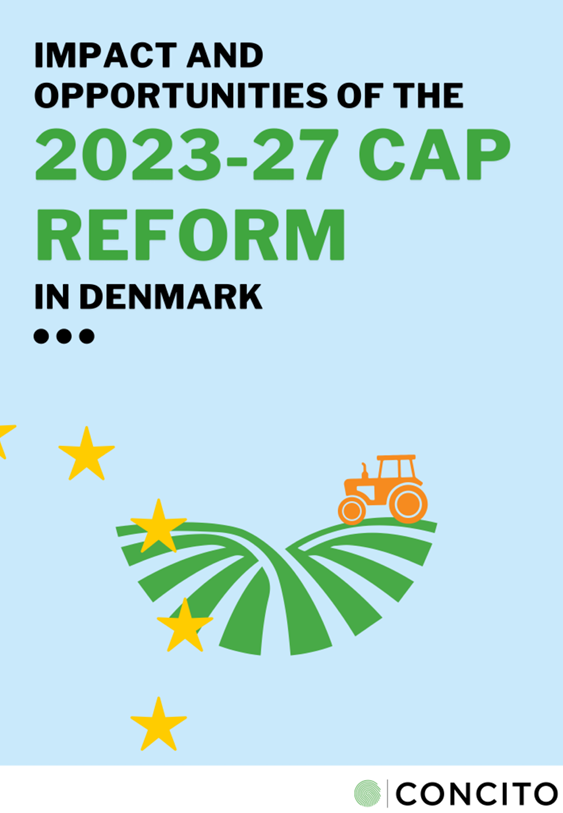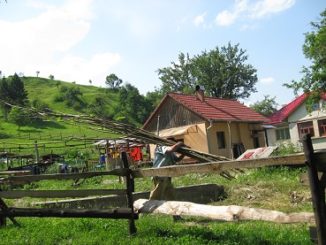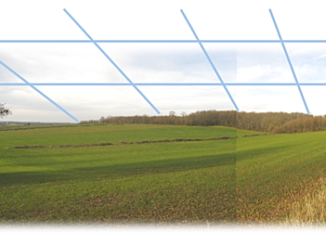
Here we reproduce the executive summary of the new report on CAP in Denmark by Simone Højte and colleagues from CONCITO, a Danish climate change think tank.
In the report that accompanies this article, CONCITO analyses the implementation of the 2023-27 Common Agricultural Policy (CAP) reform after its first year of implementation, using Denmark as a case study. The focus lies on examining the new components of the reform, namely the New Delivery Model (NDM), the enhanced conditionality, and the eco-schemes, and their contribution towards both the European Union (EU) and national objectives concerning climate, biodiversity, and the environment.
Additionally, the report examines economic developments within Denmark’s agricultural sector in 2023 and offers insights into potential future agricultural policies in the EU. The report aims to provide a near-real-time impact evaluation of some of the most crucial greening measures and assesses their effectiveness. It does not cover the rural area development program, as the expected impacts of these funds are long-term and therefore have not yet occurred.
Minimal effects from new green elements
The primary impacts of implementing the new CAP on climate, biodiversity, and the environment in Denmark in the first year have largely resulted from land set-asides incorporated in short-term commitments. On a positive note, this has allocated more land for non-productive elements in the agricultural landscape, which has slightly reduced greenhouse gas (GHG) emissions, nitrogen leaching and provided more support for generalist species in the farmland like ladybird beetle, common carabid, spiders and hare. However, as this report shows, there are significant insufficiencies both in the EU CAP framework, but especially also in the way the Danish CAP Strategic Plan (Danish CSP) has been implemented.
One of the main conclusions is that the enhanced conditionality has not introduced many new green requirements, thereby having a limited additional effect. Moreover, the implementation of the sole conditionality, also known as Good Agricultural and Environmental Conditions (GAEC) number 8, which requires allocating 4% of agricultural land to ‘non-productive areas,’ has been somewhat counterproductive. This is because it has inadvertently encouraged the clearing of semi-natural areas in some areas.

Another key finding is the low uptake of eco-schemes, with only approximately 60 pct. of the budget utilised. Moreover, the most popular eco-schemes exhibited low additionality, largely functioning as compensatory measures to mitigate the economic impact of the reform on certain sectors, rather than as incentives to provide environmental benefits. Therefore, a significant portion of the funds allocated for eco-schemes in Denmark has not been used for intended climate or environmental purposes. CONCITO estimates that approximately 37 EUR million subsidised existing operations without fostering new advancements or enhancements in environmental management. This corresponds to 57 pct. of the total applied eco-scheme funds.
In this report, the following ‘green’ effects of the Good Agricultural and Environmental Conditions (GAECs) and eco-schemes are estimated:
-
- A climate effect of 13 million tonnes CO e, corresponding to a 1 pct.1 reduction of the total Greenhouse Gas (GHG) emissions from the Danish agricultural sector.
- A reduction in nitrogen (N) leaching to the aquatic environment of 1,135–1,848 tonnes N, corresponding to 2 – 3 pct. reduction of the total N-leaching from land to sea in Denmark and 9 – 14 pct. of the 13,000 tonnes N reduction goal by 2027 stated in the Water Framework Directive.
- Short-term biodiversity measures were incentivised, which can have as much negative as positive impact on organisms in the agricultural landscape. The target of the EU Biodiversity Strategy is to reach at least 10 pct. high-diversity landscape features on agricultural land by 2030 in the EU.
Therefore, the overall green effect is minimal, and several of the green measures are also competing against each other.
Simplification of the CAP
While Denmark, as one of the few Member States, implemented all the GAECs and eco-schemes, the report shows an overall improvement of the Danish agricultural sectors’ economy in 2023. This improvement can be attributed to reduced debt for the agricultural sector, increased prices of agricultural land, and high crop prices.
Starting from 2025, the CAP will undergo another change following the European Commission’s sudden proposal to increase ‘flexibility’. This proposal will, among other things, greatly reduce the requirements of GAEC 8 to accommodate farmers’ concerns and demands following the protests in 2023-24. However, the example from Denmark shows that implementing enhanced conditionality (GAEC 8) can coincide with improvements in the agricultural economy, which raises questions about the need to remove the enhanced GAEC 8.
Danish implementation of the CAP has limited effect
The implementation of the new CAP in Denmark has revealed a deficiency in providing effective tools, establishing measurable goals, and implementing appropriate regulations to yield additional environmental benefits. While the New Delivery Model (NDM) sets a minimum level of ambition at the EU level through conditionalities, these conditionalities have not resulted in significant additional environmental effects in Denmark.
All the Danish eco-schemes are currently designed as annual schemes. However, many of the desired goals of these schemes require persistent changes in agricultural practices and land use. Therefore, the annual approach lacks the potential to significantly facilitate lasting environmental impacts and does not support farmers to make long-term investments in more sustainable production systems.
The EU CAP framework does not ensure the environmental impact of the new CAP
The performance monitoring and evaluation framework (PMEF) primarily focuses on process-oriented evaluations and, as a result, does not provide quantitative estimates of the impacts of measures implemented by Member States in the CAP Strategic Plans (CSPs). This shortfall hinders the accurate assessment of the quality of the CSPs before the ex-post evaluation scheduled for 2031. This presents a significant problem as it allows for an extended period of undetected inefficiency, unaddressed environmental impacts, and misallocation of resources.
Moreover, the governance framework in the NDM may inadvertently incentivize setting low ambitions to avoid missing targets and to ensure a high uptake of the schemes in order to distribute funds to farmers and prevent budgetary losses.
While the EU Commission is working to develop relevant methodologies for estimating the climate impacts of CSP measures, further work is critically needed to facilitate the quantification of the impacts of CSP measures in order to allow for more responsive policy adjustments within the current CAP cycle.
Need for new innovative solutions
This report highlights persistent structural issues within the CAP itself, including inadequate environmental ambition, implementation complexity, as well as conflicting interests and competing objectives; all of which further hinder the policy’s effectiveness. Hence, there is a demand for innovative solutions within EU policies addressing the agricultural sector, both within and beyond the scope of the CAP.
A more comprehensive and effective policy mix for EU agriculture is essential to tackle the multitude of challenges facing the agricultural sector. This proposed policy mix could encompass substantial reforms within the CAP, including phase out of direct payments, the implementation of an agricultural Emissions Trading System (AgETS), and the establishment of a new Sustainable Land Management and Fair Transition Fund, among other measures. It is crucial that these changes are pursued simultaneously and in a coordinated manner to prevent conflicting policy signals, such as both pricing GHG emissions and subsidising emissions-in- tensive agriculture.
The potential enlargement of the EU to include Ukraine could be a ‘shock’ to serve as a catalyst for reconfiguring the CAP, creating a window of opportunity where the proposed changes become politically viable. This ‘shock’ to the CAP could thus provide the necessary momentum for implementing a CAP reform aligned with broader sustainability and environmental goals.
To enhance the effectiveness of the new CAP framework, CONCITO recommends strengthening the conditionality, promoting knowledge exchange among member states, and implementing impact-oriented monitoring and evaluation systems for CAP implementation at the EU level.
Additionally, to amplify the effect on climate, biodiversity, and environmental objectives of the eco-schemes, CONCITO recommends strengthening the design requirements of the schemes. Specifically, implementing an ‘above-the-baseline- point-system’ in each Member State. This system should define explicit targets for each eco-scheme that surpass the national baseline, including conditionality, in quantifiable terms. This should ensure that eco-schemes not only provide tangible environmental improvements but also avoid merely compensating certain agricultural sectors for the economic impacts of the CAP reform.
Furthermore, CONCITO has the following concrete recommendations based the Danish implementation of the eco-schemes:
-
-
- Diversify the focus of eco-schemes in Denmark to prioritise more support for sustainable production systems, rather than solely focusing on setting aside agricultural Additionally, ensure that eco-schemes are designed in a way that they do not compete with long-term schemes.
- The Danish Government should provide more detailed data on the effect of the different measures to reduce nitrogen leaching to the aquatic environment.
- Establishing a baseline, goals and monitorable indicators for biodiversity in the agricultural landscape, which can be used by farmers and consultants.
-
- Eco-schemes should be targeted and regionalized based on the specific objectives of each scheme to enhance their impact and For instance, linking the biodiversity scheme to a High Nature Value map.
-
For each eco-scheme, CONCITO recommends:
-
-
- The eco-scheme ‘Diversified plant production’ is split into two eco-schemes respectively: one for plant-based foods and one for diversified plant production, thereby avoiding any counterproductive restrictions.
- The ‘Climate- and Environmentally Friendly Grassland’ eco-scheme specifically should target areas with a need for nitrogen leaching reductions, such as coastal catchments or environmentally sensitive zones as well as integrate a system that considers both the duration that land has been maintained as grassland and the proportion of grassland within the crop rotation.
- The eco-scheme ‘Biodiversity and sustainability’ is modified to be a multi-annual scheme which prioritises protection of existing biotopes and encourages long-term conservation efforts for both new and existing habitats.
-
Overall, after the first year of implementing the new CAP, the agricultural sector has yet to make a significant contribution toward aligning with the EU’s climate targets, biodiversity objectives, and environmental goals. Therefore, it is imperative to prioritise a broader policy mix for EU agriculture in the upcoming negotiations of the next Multiannual Financial Framework (MFF) by the EU Commission. This policy mix should address the wide scope of challenges within the agricultural sector and should be designed to enhance environmental integrity, effectiveness, and social equity of policy interventions by strategically integrating various policy tools.
Download the full Impact and Opportunities of the 2023-27 CAP Reform in Denmark report
(1) As a total the entire sector’s GHG emissions, including LULUCF, husbandry, manure management and application as well as fisheries and the energy use of the sector.
More
Missing Targets and Making Partnerships – Denmark and Climate Change
“CAP-as-you-wish Instead of Future-Proof Farming and Food Policy”
What the EU farmers survey tells us – and doesn’t tell us – about CAP burden





